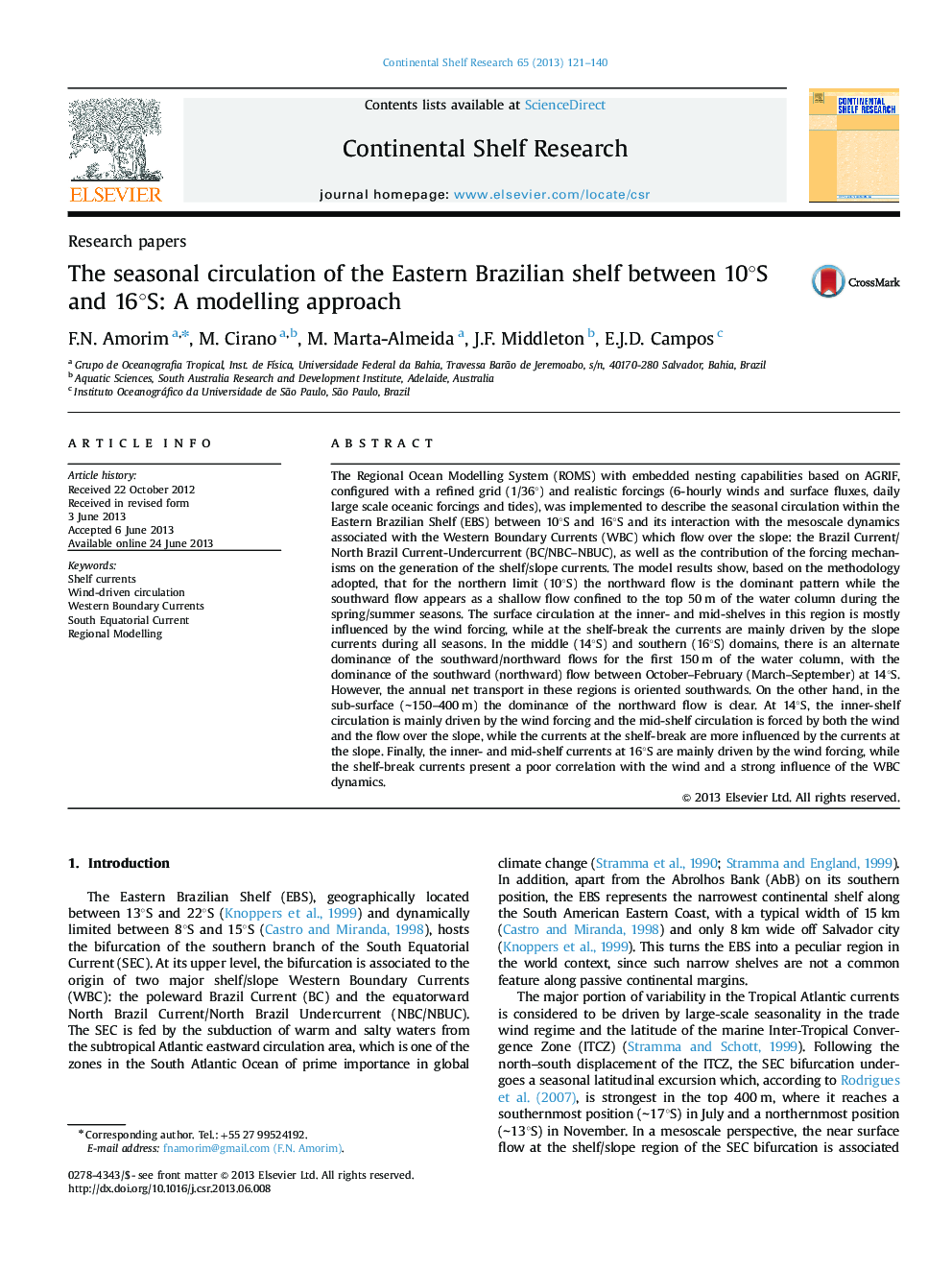| Article ID | Journal | Published Year | Pages | File Type |
|---|---|---|---|---|
| 4532109 | Continental Shelf Research | 2013 | 20 Pages |
The Regional Ocean Modelling System (ROMS) with embedded nesting capabilities based on AGRIF, configured with a refined grid (1/36°) and realistic forcings (6-hourly winds and surface fluxes, daily large scale oceanic forcings and tides), was implemented to describe the seasonal circulation within the Eastern Brazilian Shelf (EBS) between 10°S and 16°S and its interaction with the mesoscale dynamics associated with the Western Boundary Currents (WBC) which flow over the slope: the Brazil Current/North Brazil Current-Undercurrent (BC/NBC–NBUC), as well as the contribution of the forcing mechanisms on the generation of the shelf/slope currents. The model results show, based on the methodology adopted, that for the northern limit (10°S) the northward flow is the dominant pattern while the southward flow appears as a shallow flow confined to the top 50 m of the water column during the spring/summer seasons. The surface circulation at the inner- and mid-shelves in this region is mostly influenced by the wind forcing, while at the shelf-break the currents are mainly driven by the slope currents during all seasons. In the middle (14°S) and southern (16°S) domains, there is an alternate dominance of the southward/northward flows for the first 150 m of the water column, with the dominance of the southward (northward) flow between October–February (March–September) at 14°S. However, the annual net transport in these regions is oriented southwards. On the other hand, in the sub-surface (∼150–400m) the dominance of the northward flow is clear. At 14°S, the inner-shelf circulation is mainly driven by the wind forcing and the mid-shelf circulation is forced by both the wind and the flow over the slope, while the currents at the shelf-break are more influenced by the currents at the slope. Finally, the inner- and mid-shelf currents at 16°S are mainly driven by the wind forcing, while the shelf-break currents present a poor correlation with the wind and a strong influence of the WBC dynamics.
•In this study we evaluate the seasonal circulation of a narrow Continental Shelf between 10°S and 16°S based on a regional oceanic model.•The forcing mechanisms to the shelf/slope circulation change according to the regions and to the seasons.•The whole system is influenced by changes in the large-scale atmospheric circulation.
